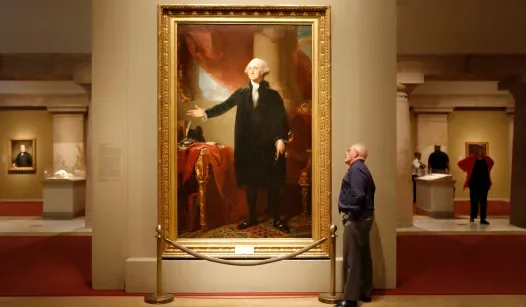The recent initiative by the White House to review museum materials presents a significant opportunity to reassess how American history is portrayed in our national institutions. This effort, if approached thoughtfully, could lead to the removal of various progressive distortions that have, over time, altered the narrative of our nation’s past.
Museums, particularly those under the Smithsonian umbrella, play a crucial role in shaping public understanding of history. They serve as custodians of our collective memory, showcasing artifacts and stories that reflect the complexities of American life. However, the challenge arises when these institutions infuse contemporary ideological perspectives into historical narratives, leading to a skewed representation of events and figures.
The importance of maintaining historical integrity cannot be overstated. History is not merely a collection of facts; it is a narrative woven from the experiences, struggles, and triumphs of individuals and communities. When museums prioritize ideology over accuracy, they risk diminishing the richness of this narrative, potentially alienating visitors who seek a genuine understanding of the past.
To illustrate this point, consider how certain historical events have been framed in recent years. For instance, discussions surrounding the founding fathers often emphasize their flaws without acknowledging the context in which they lived and the complexities of their contributions. While it is essential to recognize the shortcomings of historical figures, it is equally important to provide a balanced view that appreciates their roles in shaping the nation.
Moreover, the portrayal of pivotal moments in American history, such as the Civil War or the Civil Rights Movement, can sometimes lean towards a one-dimensional narrative that overlooks the diverse perspectives that existed at the time. A comprehensive approach to history should encompass a variety of viewpoints, allowing visitors to engage with the complexities of these events rather than being presented with a simplified version that aligns with contemporary ideologies.
The proposed review by the White House could serve as a catalyst for a broader conversation about the purpose of museums in society. Are these institutions meant to educate and inform, or do they also have a responsibility to promote specific ideological viewpoints? Striking a balance between these objectives is critical for fostering an environment where history can be explored in all its nuances.
In addition to reassessing the narratives presented in museums, this initiative could also encourage a renewed focus on the importance of primary sources and historical documentation. Engaging with original materials allows for a more authentic understanding of the past, enabling visitors to draw their conclusions based on evidence rather than interpretations shaped by contemporary beliefs.
As this review unfolds, it will be essential for museum professionals, historians, and policymakers to engage in open dialogue about the direction of historical narratives. This collaboration can help ensure that museums remain places of learning and discovery, where visitors can grapple with the complexities of history rather than being presented with a curated version that aligns with a particular ideology.
Ultimately, the goal should be to create a space where history is honored in its entirety, acknowledging the triumphs and failures that have shaped the American experience. By prioritizing historical accuracy and integrity, museums can fulfill their mission of educating the public while fostering a deeper understanding of the past.
As we move forward, it is crucial for all stakeholders to participate in this conversation, advocating for a vision of history that reflects the diverse tapestry of American life. The outcome of the White House’s review could set a precedent for how we approach history in the future, making it an opportune moment for reflection, discussion, and, ultimately, a commitment to preserving the integrity of our nation’s story.
